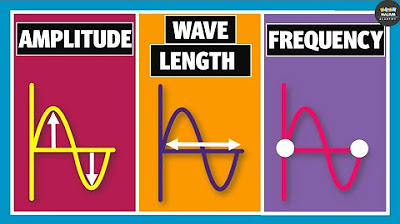Periodo en estructuras - Explicación práctica y conceptos
Summary
TLDRThis video script introduces fundamental concepts of structural dynamics: the period, defined as the time for a system to complete one oscillation, and frequency, the number of oscillations in a given time. Using a model of buildings of varying heights, the presenter demonstrates how deformation and mass distribution affect these properties. The script also explains resonance, where external vibrations match a structure's period, causing significant oscillations, especially in taller buildings. It concludes with the importance of building codes and acceleration spectra in earthquake-resistant design.
Takeaways
- 🕒 The script introduces the concept of 'period' as the time it takes for a system to complete one full oscillation.
- 🔢 'Frequency' is defined as the number of oscillations a system makes in a given time.
- 🏢 The model used represents buildings of different heights to illustrate the concepts of period and frequency.
- 📉 As the height of the model decreases, so does the period, meaning it takes less time for each oscillation to complete.
- 🔁 Conversely, as the height decreases, the frequency increases, with more oscillations occurring in the same time frame.
- 📊 Mass distribution affects the period of oscillation; moving mass alters the frequency as seen in the model.
- 🔗 The period is influenced by two factors: the mass of the system and the system's stiffness, represented by 'k'.
- 🌊 External vibrations, such as those from earthquakes, can significantly affect structures, especially when their period matches that of the structure, a phenomenon known as resonance.
- 🏗️ Building codes worldwide use experimental data and soil characteristics to relate different periods with the acceleration that would occur in structures.
- 📈 The script mentions the use of acceleration spectra as a method to understand how structures will respond to seismic activity.
- 🌟 The script promises to discuss the topic of acceleration spectra in more detail in upcoming videos.
Q & A
What are the two basic concepts of structural dynamics introduced in the script?
-The two basic concepts introduced are 'period', which is the time it takes for a system to complete one oscillation, and 'frequency', which is the number of oscillations the system makes in a given time.
How does the script demonstrate the concept of period in relation to building structures?
-The script uses a model representing buildings of different heights to show that the time it takes for the mass to move to the other side and return represents the period of the system, and this time decreases as the height of the building decreases.
What is the relationship between the height of a building and its period according to the script?
-As the height of the building decreases, so does the period, meaning it takes less time to complete each oscillation.
How does the frequency of a system relate to its period?
-The frequency is inversely related to the period. If the period decreases, the frequency increases, meaning more oscillations occur in the same amount of time.
What factor can affect the period of a system, as mentioned in the script?
-The distribution of mass can affect the period of a system. When mass is located differently, it can cause changes in the frequency of oscillation.
How does the script explain the relationship between mass distribution and the frequency of oscillation?
-The script shows that when mass is moved to a different position, the frequency increases compared to when it was at the top, indicating that the mass distribution affects the system's oscillation frequency.
What are the two factors that determine the period of a system according to the script?
-The two factors that determine the period of a system are the mass of the system and its rigidity, represented by the letter 'k'.
What is the phenomenon where an external vibration causes a similar vibration in a nearby structure?
-This phenomenon is called 'resonance', which occurs when the vibration of one element is transmitted to another and causes it to vibrate as well, especially when their periods are close or the same.
How does the script illustrate the concept of resonance in structural dynamics?
-The script shows an example where an element is vibrating and transmits this vibration to a wooden structure. If the period of the vibrating element is close to that of the structure, the structure will also start vibrating due to resonance.
What happens when a structure's period coincides with the period of an earthquake?
-When a structure's period coincides with that of an earthquake, the structure enters into resonance, leading to strong vibrations that can cause significant damage.
How do building codes account for the effects of earthquakes on structures?
-Building codes use methods based on experimental data and soil characteristics to relate different periods with the acceleration that would occur in structures, such as using acceleration spectra.
What is the script's final note on the predictability of how earthquakes will affect structures?
-The script notes that it is impossible to know exactly how earthquakes will make structures vibrate, as they cannot be predicted. However, building codes have implemented methods to estimate these effects.
Outlines

This section is available to paid users only. Please upgrade to access this part.
Upgrade NowMindmap

This section is available to paid users only. Please upgrade to access this part.
Upgrade NowKeywords

This section is available to paid users only. Please upgrade to access this part.
Upgrade NowHighlights

This section is available to paid users only. Please upgrade to access this part.
Upgrade NowTranscripts

This section is available to paid users only. Please upgrade to access this part.
Upgrade NowBrowse More Related Video

Wavelength, Frequency, Time Period and Amplitude | Physics

Simple Pendulum

(Part 4) Longitudinal Stability Of Aircraft | Lecture

Gerak Melingkar, Sudut Derajat Radian, Periode, Frekuensi GMB GMBB FISIKA SMA BELATIK Part 1

Time period of a pendulum depends on its length | Oscillation| Physics

The Simple Pendulum
5.0 / 5 (0 votes)